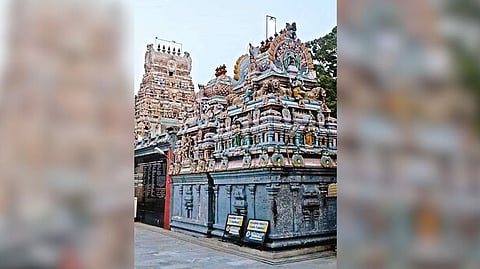

The Boat Clubs and Poes Gardens play host to the rich and famous of Madras’s elite today. But the first area developed for the exclusive use of the affluent was Pudupet in the 1700s, which is now a thriving market of automobile second hand parts. Some even call it the chor bazaar of Madras. A sad deterioration from the fantastic lifestyles history records for us in Pudupet.
The black town (original Madras) was a migrant town. People came flocking in search of a better and safer life. Some quickly climbed the ladder and became extremely rich. Within 100 years, Madras black town had a native elite. As the commerce of the East India Company was entirely with the local people, it naturally drew to the proximity of some who were capable of learning two languages. Between the European and the new elite evolved a curious ambivalent and symbiotic relationship.
By then, black town was crowded and buildings were cramped. Emerging class system in madras was creating social difficulties for the different sections to live together. Also frequent caste riots made life unbearable.
The East India Company had moved out the weavers to separate housing areas such as Chintadripet and Colletpet. But the new elite, the dubashes and the chief merchants felt that black town was too cramped and unsafe for them. Many of them already had garden houses in nearby pilgrim towns. But they also wanted to be near the scene of action- the Fort St. George.
Pudupet was an exclusive area developed on the banks of the yet to be named Cooum river. It was mentioned as Vrddha Kshira Nadi or the old Palar. It was well known even at that time that Cooum was an offshoot of the much longer Palar. It was at Pudupet, that the river took a north turn and became a Uttaravahini- very auspicious in Hinduism.
By all accounts, it was Pachaiyappan Mudaliar who led the rich of the town here. Pachaiyappan, the richest of them all, had once loaned the Thanjavur Maharajah, a sum of 1,00,000 pagodas( gold coins with a temple engraved). The place where Pachaiyappan moved here with his two wives is a road named after him today- Conjeevaram Pachaiyappan Mudaliyar street or CPM street. A devout man who even rebuilt the east gopuram tower of Chidambaram, he must have initiated the Komaleeswarar temple in Pudupet. Though there are no official records, it has always been held that Pachaiyappa Mudaliar bathed daily in the holy Cooum and worshipped the Lord there every day. The presiding deity is Lord Komaleeswarar and Ambal is called Komalambigai. The road was called Pagoda street. The temple unfortunately has only one inscription dated 1816, mentioning the wife of a Saurashtrian silk merchant.
There is a stream of thought that Komaleeshwaram on the banks of the river was mispronounced by cartographers and became the Cooum we know today.
At its peak, Pudupet was a city of garden houses. A flourishing temple perpetually bathed in the river breeze of the yet to be ruined Cooum. One of the very few Sanskrit works on Madras, the Sarva Deva Vilasa, calls the town Navashtala. Sarva Deva Vilasa (the dwelling place of all Gods), was a narrative descriptive of the place and persons and talks about the social conditions of the then Madras. The narrative is in the form of dialogue between two celestial figures, Vivekin and Ativivekin, who fly above Madras. Indeed, it was a new town with an opulent lifestyle never seen before. The evenings had torches lit, making the night as bright as day. The sound of music and the anklets of dancers were the background sounds of the evening.
The lifestyles of the Pudupet residents were equivalent to the kings. Poets wrote pancharatnamalas on them. They lived in pomp, travelling in palanquins and had huge retinues of servants. They had punkah pullers fanning their rooms perpetually in shifts. Weddings of Pudupet were four-day affairs accompanied by elephants in procession, and fireworks in the sky. Even funerals too were lavish. When a member of the family died, the road to the graveyard was sprinkled with turmeric, saffron and frankincense, and funeral pyres were of sandalwood logs.
Unfortunately, Pachaiyappan was not happy with his riches; even the will that he wrote in Pudupet, being the first modern will, was contested in the courts for a century.
Amongst the other residents of the Pudupet was Swamy Naik (who has a bust in Pudupet harris road now), was the chief dresser in the Madras Army Medical Corps. Inspired by collector Ellis, Naik was one of the first vaccinators in the world. In those ignorant times, he was often thought to be a practitioner of black magic and beaten up.
Pudupet, in later years, being close to Egmore station, also had a high Christian and Anglo-Indian population led by the Capuchin priests. In 1873, Pudupet was chosen to be a parish community.
Today, the Harris bridge connects Mount Road with Pudupet and it’s the thoroughfare that used to connect the two main roads of madras.
The once famous Chithra theatre in Pudupet has had many blockbusters screened. When MGR’s Vettaikaran was shown here, a live tiger in a cage was exhibited near the ticket counter.
— The writer is a historian and an author
Visit news.dtnext.in to explore our interactive epaper!
Download the DT Next app for more exciting features!
Click here for iOS
Click here for Android